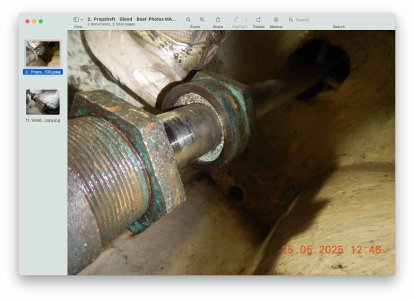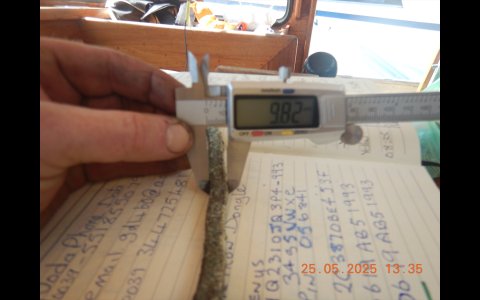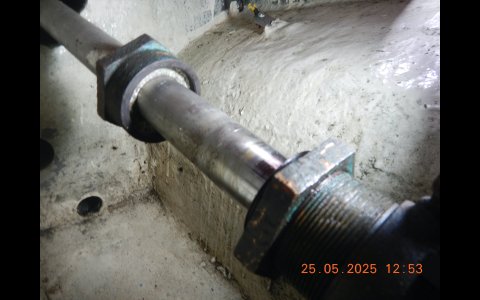vyv_cox
Well-Known Member
Another factor is that you need to be aware that you can have electrolytic corrosion using graphite packing with stainless steel shafts. Crevice corrosion is a potential problem with any packing, due to the exclusion of oxygen, even with a nickel aluminium bronze (NAB) shaft, as in my case. There are some relatively exotic packings available that are worth considering, many combining PTFE and graphite!
Close to scare-mongering, I fear. Galvanic corrosion is theoretically possible between graphite and stainless steels but the reality is that it is almost unknown, particularly where the graphite is such a minor part of the packing mix.
I have been researching crevice corrosion in stainless steels for some years and have never come across it in a packing, although there are photos of it under cutless bearings on my website. Considering how many hundreds of thousands of boats use packed glands without suffering this problem it cannot be considered a genuine risk.
So far as nickel aluminium bronze is concerned, the copper Development Association says this:
Any crevice corrosion of aluminium bronzes, however, takes the form of minor selective phase dealloying ....... which results in little reduction of strength and practically no impairment of surface finish. Aluminium bronzes are, therefore, very widely used for pump shafts and for valve spindles - situations where pitting corrosion in crevices makes stainless steels, for example, unsuitable.



